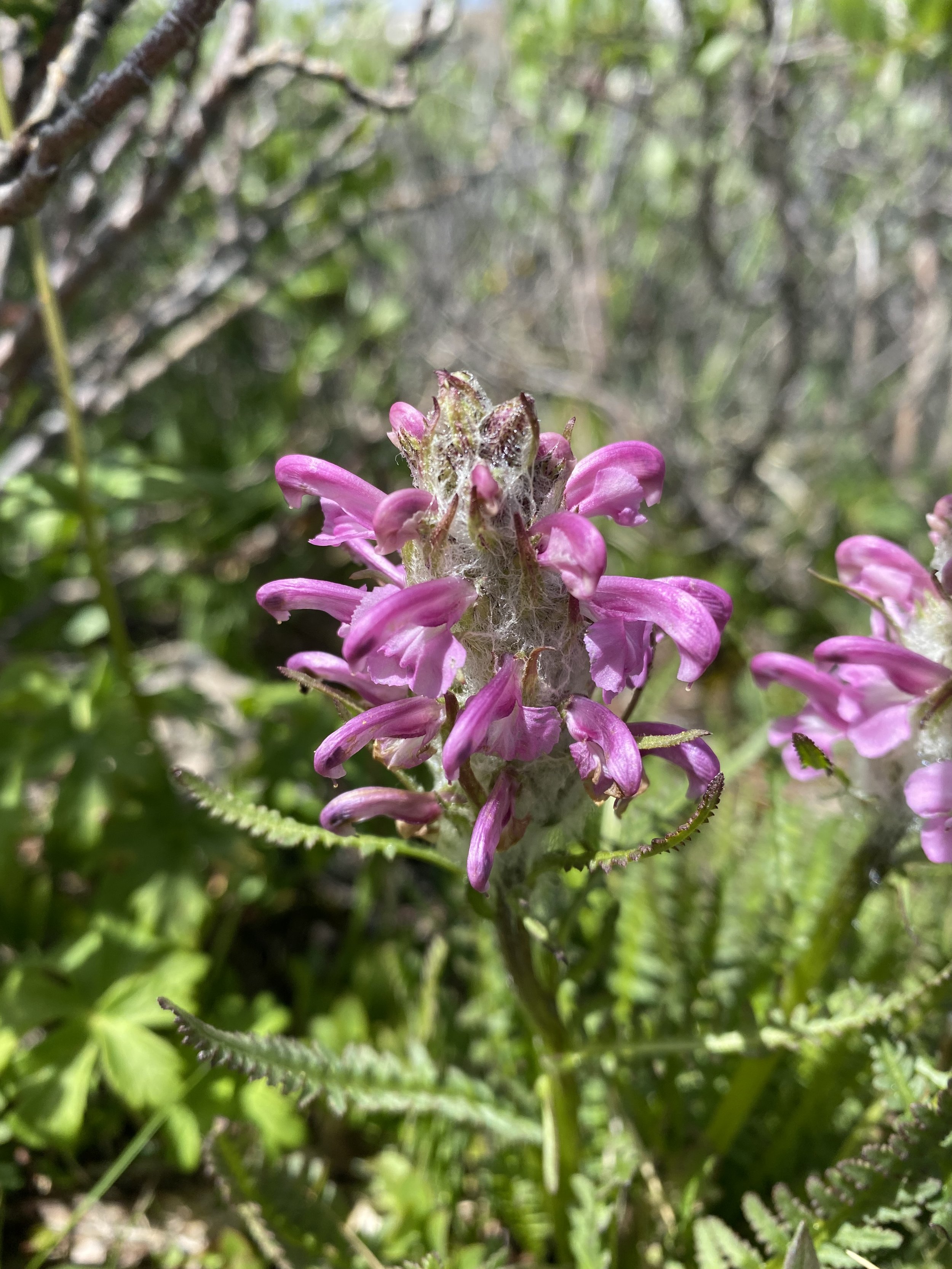Pedicularis bracteosa, June 29, 2022
Common & scientific name
Bracted lousewort, Pedicularis bracteosa
Family
Broomrape, Orobanchaceae
Location
Upper Lost Man TH, 11,600
Fun, weird, helpful, or little known fact
Smaller than towering lousewort, Pedicularis procera, but bigger than all the other Pedicularis species, this is commonly found in wetter meadows and forests from the montane to the alpine. It has the typical fern/ladder-like leaves of the genus, this one with a spike of yellow flowers that begin growing from the bottom up.


































